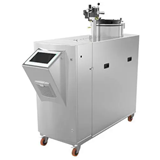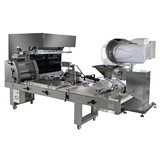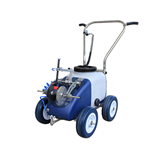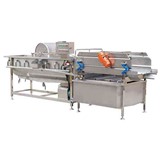This buoyancy has also been in evidence in terms of ongoing new product activity, with Innova Market Insights recording a strong double-digit increase in launch activity globally in the January to July 2009 period, compared with the same 7 months in 2008.
Launches reached over 5,000 in numbers during that time, with Europe accounting for a dominant 50%, although its share was down slightly. Across the Atlantic, the US saw its share rise by several percentage points to 25%.
The huge and highly competitive US chocolate confectionery market (US$17bn) has seen a wide range of product activity in 2009 to date, featuring the development of well-known products and brands, as well as the launch of more innovative and unusual lines from smaller producers.
Among the leading suppliers, product activity has included the extension of Hershey’s premium Cacao Reserve and Signature Collection range, Mars’ launch of Overload King Size S’mores, a Special Edition M&Ms in Strawberried Peanut and a limited edition coconut variant, plus the launch of a peanut butter variant in its Dove Promises range.
Nestlé has launched lighter Crisp versions of some of its popular countlines, including Crunch, Butterfinger and BabyRuth, featuring baked wafer layers between familiar characteristic ingredients from each brand.
Mars has also been developing its Generation Max healthy balance concept to show its commitment to fighting obesity, and now includes M&Ms Cakes and a 3 Musketeers Brownie Bar in the range.
Despite the strong taste requirement in the market, health does still appear to be influencing product activity, with the Innova Database recording that nearly a quarter of US chocolate confectionery launches were on a health platform of some kind, though most were fairly passive, with features such as reduced-fat or reduced-sugar.
They included organic line concepts, which are continuing to appear, led in early 2009 by the launch of block chocolate bars into the Newman’s Own Organics food range.
There were relatively few products with a more active health or functional positioning. These included probiotic chocolate bars from Attune Foods, which already offers probiotic cereal bars. Other chocolate with a healthy twist included Nestlé’s launch of a cranberry variant of its Raisinets chocolate-coated dried fruit brand, and Mars introduction of its Fling reduced-calorie chocolate countline targeted at women, which is marketed as ‘naughty but not that naughty’.
In Western Europe, there was a similar, if slightly lower, apparent interest in healthy confectionery lines, with products marketed on a health platform accounting for about 22% of total chocolate launches, although this represented a higher number of launches overall than in the US, because of the higher level of launch activity.
The big five (France. Germany, Italy, Spain and the UK) accounted for nearly three-quarters of chocolate launches in Western Europe recorded by the Innova Database in the first 7 months of 2009. Germany led with nearly one-third of the total, reflecting its large market and high per capita consumption. The UK was next, with just under 20%, ahead of Italy and Spain, each with less than half the UK level.
Within the German market, there were similar trends in evidence to those of the US, with brand extensions supported by some new formats, particularly in terms of products straddling a number of different confectionery markets. These included Manner’s Mannini chocolate coated mini-tortes, Rubezahl Schokoladen’s Choco Gomis combining milk chocolate bars with gummi bears embedded in each segment, and Brandt’s range of Knusper crunchy chocolate snacks featuring chocolate coated wholemeal rye balls and bars.
Meanwhile major brands have been focusing on limited edition lines, including Milka with its Alpenwelt (Alpine World) sub-brand, featuring three chocolate bars made with alpine milk, and filled with alpine-style ingredients. Ritter, which leads the 100 gram square chocolate bar market, extended its organic range with the launch of a Macadamia nut variant in its Ritter Sport range.
LuAnn Williams, Head of Research for Innova Market Insights, reiterates that “Chocolate, in particular, can perhaps maintain sales in difficult times by offering a little indulgence or treat even as consumers may have to cut down on more expensive luxuries.
“Many companies,” she contends “have continued to invest heavily in promotional activity to maintain sales, and if this is combined with a more considered new product policy, focusing on core brand values and/or real innovation, there are still opportunities for survival and even growth.”
Why do some products survive difficult financial times better than others? Share your ideas using the comments form below:





-160x160-state_article-rel-cat.png)















